Covid-19
Has Alcohol Become a Problem During the Pandemic! It’s Time to Get Help

Over the past year, along with the surge in the pandemic, there has also been a surge in alcohol consumption and addiction. The following guide takes a closer look at the rise in heavy drinking during the pandemic and the options for alcohol treatment.
When the COVID-19 pandemic first arrived in the UK, few were prepared for the upheaval and the devastation it would cause in their lives. As the government issued the first major lockdown for the country in 2020, individuals and families who were already concerned and under strain experienced isolation, anxiety, and the worsening of mental health conditions.
If you or a loved one has become addicted to alcohol during the pandemic it’s time for you to seek professional help. Inpatient drug rehab has been shown to have a very high success rate when it comes to recovering from addiction. So how effective is inpatient treatment? When compared to outpatient treatment, inpatient treatment can be more than 80% more successful.
What is Driving the Alcohol Problem During the Pandemic?
The lockdown resulted in the shutdown of businesses, retailers, and non-essential services. Many people felt lonely and isolated driving higher levels of anxiety and depression during this period. The crisis also led more people to rely on alcohol to cope with stress particularly those living on their own who felt isolated from friends, family, and their routines.
The Liver Trust Foundation reported a 500% rise in alcohol consumption and heavy drinking over the past year while cases of domestic violence with alcohol as a risk factor have also drastically increased for the same period.
The problem with alcohol consumption and addiction during the pandemic is isolation. For people with addiction and mental health problems, the lockdown created challenging and difficult circumstances from which many felt that they could not escape.
As medical facilities and organizations focused their efforts on addressing COVID, there was little attention paid to those struggling with addiction and mental health difficulties. Lockdowns also meant that support groups and organizations offering addiction support were closed which further isolated those who were looking for support.
Related: Massage Parlor, Spa May Double as Quarantine for Foreign Tourists
In 2020, there was a 20% increase in alcohol-related deaths. The Office for National Statistics (ONS) indicated a sudden rise in alcohol-related deaths for April to September 2021 revealing the consequences of the pandemic on long term health and the harm caused by heavy drinking
There were also reports of increases in suicidal thinking and attempts since the onset of the pandemic. Because many were in lockdown or self-isolating, their addictive behaviors could continue behind closed doors and without the knowledge of their loved ones.
Not only has the COVID pandemic worsened individual mental health but has also negatively affected physical well-being.
If you are struggling with alcohol and addiction, it is important to find the help and support that you need. In the following section, we look at the treatment options available for those struggling with heavy drinking and problems associated with alcohol use.
What are the Different Treatment Options Available?
The treatment you seek will depend on the nature and the severity of your drinking habits. It also depends on whether you will enter a residential rehabilitation or inpatient program in which you remain at the facility for a specified period. Outpatient services are also available and offer a flexible approach to treatment.
Private Treatment
Residential Alcohol Rehab
Private treatment in the UK is offered through private rehabilitation services, the NHS will rarely fund treatment for individuals struggling with alcoholism. Private treatment can be expensive; however, some medical insurances do provide cover or partial cover for treatment. The typical length of stay ranges from 14 days to 28 days or longer where necessary.
For acceptance into an alcohol rehab program, individuals are assessed including overall physical and mental health, how long you’ve had the addiction, and if you are using or are addicted to other substances such as illicit drugs. Family life and overall lifestyle are also part of the evaluation to find the right program and treatment for you.
Before entering a residential rehab program, detox and overcoming withdrawal must take place before treatment can begin. Most private rehab centers in the UK offer an integrated detox & therapy program.
Related: Thailand Must Adapt and Coexist Safely With the Coronavirus
Private Outpatient Services
Private outpatient programs are an alternative for those struggling with alcohol abuse and addiction. The most popular therapies offered through private counseling are cognitive behavioral therapy or CBT, and psychodynamic therapy.
Therapeutic sessions will focus on one-on-one interactions with a professional therapist (sometimes group therapy may be involved) to work towards overcoming addiction. You will meet with your counselor according to a schedule with each session lasting between 30 and 45 minutes.
It is a highly individualized approach and considered more affordable than inpatient treatment; however, for those affected by severe heavy drinking and alcohol dependence, it is less effective than residential rehab.
Medical Detox
Before you can successfully enter a rehab program, medical detox from alcohol may be necessary. Detox is the process in which alcohol is metabolized by the body and is no longer active in your system. Medical detoxes are advised for alcohol addiction because of the severity of withdrawal and the life-threatening symptoms associated with detoxification.
Detox-only programs are available through the NHS or via a GP; however, without seeking ongoing addiction counseling thereafter, it significantly reduces your chances of successful recovery. If you are not taught how to cope or ways of dealing with underlying issues, alcohol will remain a crutch and impede your sobriety.
NHS Services & Free Support Groups
Because the NHS is government-funded, NHS outpatient services typically involve being placed on a waiting list before treatment can begin. It is also less likely to be individualized as with private residential rehab because of the large number of patients to each therapist.
Charities and support groups such as Alcoholics Anonymous (AA) are also available to provide support to individuals overcoming alcohol addiction. AA is described as a self-help support group in which meetings are attended every week and individuals are taught how to take control of their behavior and their lives.
Other charities that offer support services for alcohol addiction include:
Adfam – focuses on assisting families and alcohol addiction.
Addaction – support services with an educational approach to handling alcohol misuse.
Compass – this organization offers both structured programs for treatment and pop-in centers for individual visits.
Getting Help for Alcohol Addiction
Alcohol addiction has gripped the lives of many who have felt isolated, anxious, and depressed with the onset of the pandemic. Seeking help when you need it can make a positive difference in your life and help you with the tools and support that you need to overcome alcohol dependence.
Joining a long-term recovery and support group should be a part of your sober journey to help you work through challenges and difficulties along the way and after treatment.
Related: Coronavirus Testing Clinic Spurns Anti-Vaxxer Candace Owens: You Made Pandemic ‘More terrible’

Covid-19
WHO Reveals FLiRT Variants as Predominant SARS-CoV-2 Strains in 2024
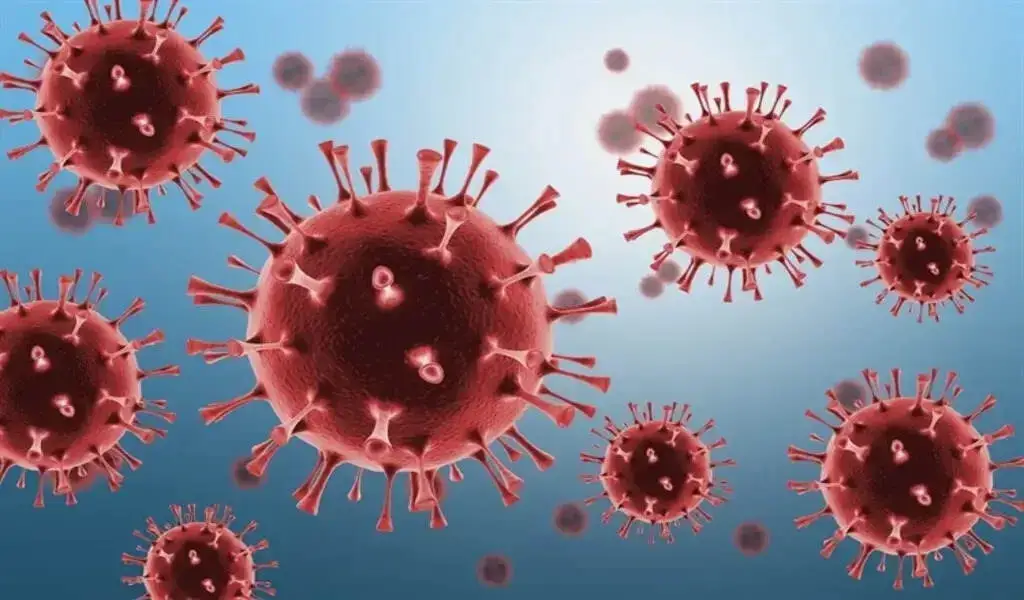
(CTN News) – The World Health Organization (WHO) has reported that the “FLiRT” versions of the fatal SARS-CoV-2 virus, which causes COVID-19 illnesses, are the most common virus strains this year worldwide.
According to Gulf News, the moniker “FLiRT” refers to the shared mutations on the virus’s spike protein among the variations.
According to the US Centers for Disease Control and Prevention, KP.2, one of the FLiRT variants, has become the most regularly circulating variant in the United States in the last month.
Johns Hopkins University says that the FLiRT variations, which include KP.2’s “parental” lineage JN.1, have three important changes on their spike protein that may help them avoid being caught by antibodies.
Are the FLiRT variations more contagious?
Dr. Aaron Glatt, a representative for the Infectious Diseases Society of America, stated that based on the data he collects and experiences with his own patients, he has seen no evidence of an increase in disease or hospitalizations.
“There have been some significant changes in the variants, but I think in recent times it’s not been as important, probably because of the immunity many, many people already have” due to vaccinations and previous illnesses.
According to CDC data, COVID-19-related hospitalizations have been declining in recent weeks.
Furthermore, the number of patients in emergency rooms who tested positive for COVID-19 has been rather stable over the last month.
Continue to evolve before winter, when infections and hospitalizations often peak, and whether the FLiRT strains will be included in a fall COVID-19 vaccine.
Dr. Roberts answers three questions about the FLiRT variations.
1. Where did the FLiRT strains originate?
Nobody knows where the FLiRT variations first appeared. The CDC initially discovered them in wastewater in the United States, where it screens sewage for signs of SARS-CoV-2 circulating in a community, even if patients do not have symptoms. (The data can be utilized to provide an early warning if infection levels in a community are increasing or decreasing.). FLiRT strains have since been discovered in several other nations, including Canada and the United Kingdom.
To better appreciate how the FLiRT strains developed, consider how the SARS-CoV-2 virus has evolved, with new varieties developing when mutations occur in its genetic coding. Omicron was a SARS-CoV-2 variant that became prevalent in the United States in 2021 and began to produce its subvariants. One of these was JN.1, which was discovered in September 2023 and spread across the country during the winter months, increasing COVID-19 hospitalizations. JN.1 has offspring, including the FLiRT subvariants, which are spinoffs of JN.1.11.1.
2. What do we know—and don’t know—about the FLiRT variants?
We know that the FLiRT variations had two changes in their spike proteins (the spike-shaped protrusions on the virus’s surface) that were not present in JN.1 (the previously prevalent strain in the United States). Some specialists believe that these alterations may allow the virus to avoid people’s protection, whether from the vaccination or a previous bout with COVID.
However, Dr. Roberts believes that the FLiRT variations’ genetic similarity to JN.1 should be reassuring. “While JN.1 occurred during the winter months, when people gather indoors and the virus is more likely to spread, its symptoms were milder than those caused by variants in the early years of the pandemic,” according to him.
There is no word yet on whether a COVID sickness will be more severe with the FLiRT variations or how symptoms may vary. Because everyone is different, a person’s symptoms and severity of COVID disease are largely determined by their immunity and overall health rather than the variant with which they are infected, according to the CDC.
3. How can people defend themselves from FLiRT strains?
Dr. Roberts emphasizes the importance of vaccination as a critical tactic against COVID-19. He recommends that all eligible individuals stay up to date on their immunizations. While immunization does not guarantee immunity, it does dramatically reduce a person’s risk of severe disease, hospitalization, and death from COVID-19.
“We know that the updated monovalent vaccine, which was designed for the XBB.1.5 variant, worked against JN.1, and I strongly suspect it will have some degree of activity against the FLiRT mutations as well,” adds Dr. Roberts.
“I would especially recommend anyone who qualifies for the vaccine because of advanced age get it if they haven’t already,” says Dr. Roberts. “The reason is that the biggest risk factor for a bad outcome from COVID is advanced age.” In the fall of 2023, eligible individuals over 65 can receive the first shot of the revised vaccine and then another shot four months later.
He also believes COVID testing will be able to detect FLiRT strains, and antiviral medications will continue to be effective against them. Paxlovid, the primary treatment for most COVID patients, targets a “nonspiked part of the virus,” he explains. “It’s relatively variant-proof, so it should act against many future COVID iterations.”
Additional preventive measures can assist. To prevent COVID-19, avoiding direct contact with sick people, wearing a mask, washing your hands thoroughly, enhancing ventilation, and monitoring transmission levels in your area is important. Additional options are available on the CDC website.
Covid-19
New Omicron Subvariants, KP.2 and KP.3, Dominate in Canada: What You Need to Know

(CTN News) – More than four years after COVID-19 effectively shut down the world, two new versions of the unique coronavirus have emerged as the dominant strain in Canada.
These new subvariants, KP.2 and KP.3, are classified as Omicron mutations originating from the COVID-19 virus. As of May 19, 49.2% of COVID-19 cases in Canada involved one of these strains, indicating their rapid expansion.
But how much do these subvariants affect the human body? Dr. Isaac Bogoch, an infectious diseases specialist at Toronto General Hospital, believes that while it is too early to say, the most likely outcome is no.
“It’s going to cause predictable symptoms, just like the other sublineages of Omicron,” Bogoch told CTVNews.ca. “Some people will have more serious infection, some will have a milder infection, and some will have no symptoms at all.”
Bogoch, an associate professor at the University of Toronto’s Faculty of Medicine, says the virus’s impact will vary depending on each individual, with factors such as age, health, and underlying medical disorders all playing a role.

Public Health Outlook in Canada
He also claims that the current set of vaccines continues “to do a remarkable job in reducing the risk of serious infection.” Thus, even though the most recent boosters do not account for these new varieties, they still protect the most vulnerable individuals.
However, in the first few months of the subvariant’s existence, there has been no indication that Canadians or public health experts should be concerned.
“The first Omicron wave was terrible, back in late 2021 and early 2022,” he stated. “However, subsequent Omicron waves have had fewer and fewer effects on our healthcare system and society.”
“Of course, this is not to diminish the importance of COVID. “It’s terrible, and certain populations are particularly vulnerable,” he added. “(Both federal and provincial) Public health can do a lot of good by having clear, open, transparent conversations with the general public, just discussing what the current state of COVID-19 is.”
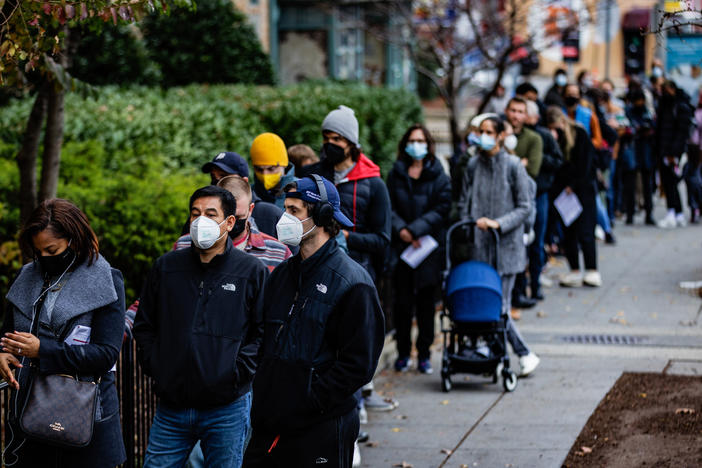
WASHINGTON, DC – DECEMBER 03: People line up outside of a free COVID-19 vaccination site that opened today in the Hubbard Place apartment building on December 3, 2021 in Washington, DC. The DC Department of Health is stepping up vaccination and booster shots as more cases of the Omicron variant are being discovered in the United States. (Photo by Samuel Corum/Getty Images)
Cases have been quite low in the spring and summer, as in the previous few COVID-19 and flu seasons before 2020, before increasing in the autumn and winter.
Bogoch expects the National Advisory Committee on Immunization, Canada’s primary authority on vaccine use, to issue guidelines in the autumn. New COVID-19 injections will be available around the same time as influenza vaccines.
While Canadians have begun to adjust to life after years of pandemic restrictions, cautious optimism is present in the post-COVID world.
Covid-19
Researchers Found Two Extremely Rare Side Effects of the COVID-19 Vaccine
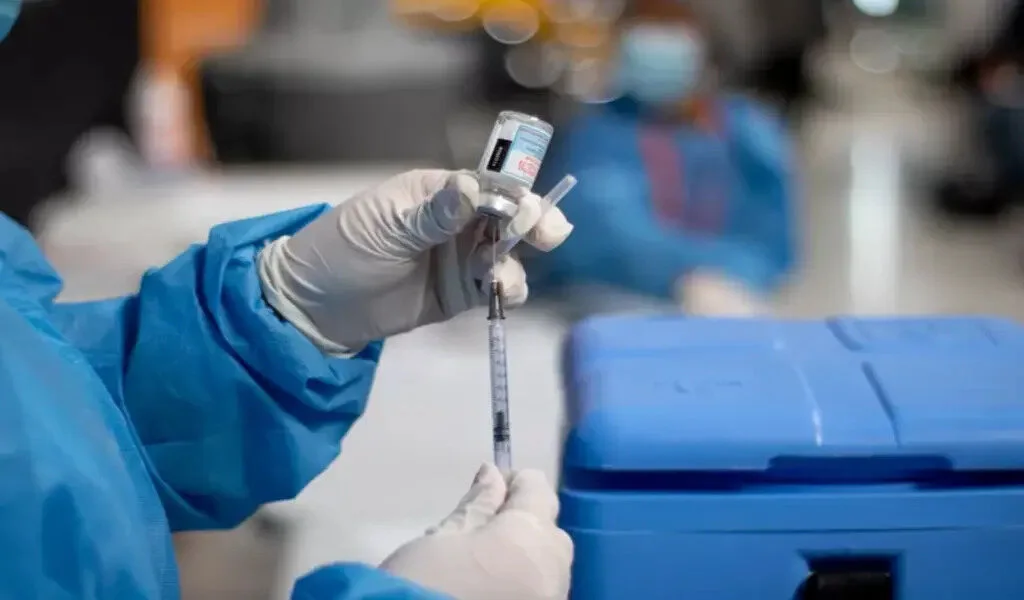
(CTN News) – As millions of people receive their doses of the Covid-19 vaccine, the world is in a race against time to combat the disease. Vaccines have emerged as an integral part of the fight against this pandemic, so ensuring the safety of these vaccines has become increasingly important. As a result of recent studies, it is now known that there are two rare side effects associated with the COVID-19 vaccines, which adds another layer of complexity to the vaccination campaign.
Side effects of the Covid-19 vaccine
Vaccination safety is a broad topic that must be understood before we look at these rare side effects in detail. Common side effects, such as sore arms, fatigue, and mild fever, are well-documented and usually short-lived. Despite the sheer scale of the vaccination campaigns for COVID-19, continuous monitoring is required to identify any unexpected adverse events that may occur.
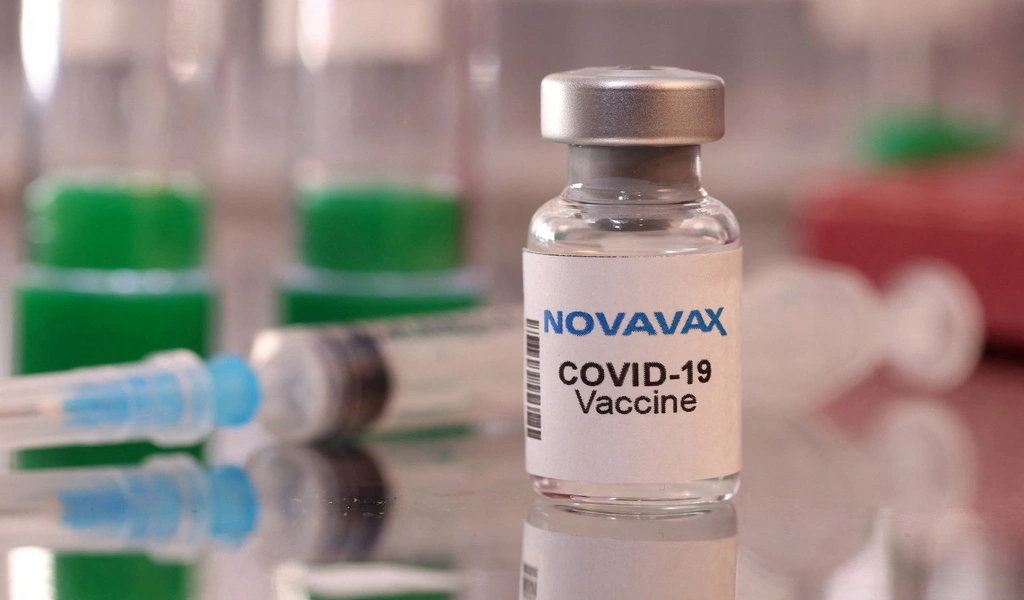
The Study
The purpose of this study was to analyze data from vaccinated individuals and identify any patterns that might be unusual. The study’s methodology and the diverse pool of participants provided an opportunity to understand potential risks related to vaccines.
Rare Side Effect #1: Allergic Reactions
There have been uncommon allergic reactions following vaccination as one of the rare side effects identified. Even though allergic reactions can vary in severity, the study found instances of uncommon allergic reactions following vaccination. To ensure the safety of vaccine recipients, it is crucial to understand the types and frequency of these reactions.
Rare Side Effect #2: Myocarditis
It is also important to recognize and address the possibility of myocarditis, another rare side effect highlighted by the study, as an inflammation of the heart muscle. Although this is a rare consequence of the treatment, the study emphasizes the importance of recognizing it and addressing it if it occurs.
Impact on Different Age Groups
According to the study, age appears to significantly influence the prevalence of these rare side effects. Also, the study indicates differences in side effects between different age groups, which leads to tailored recommendations for vaccine recipients of varying ages.
Recognizing Symptoms
If you recognize symptoms, you can treat these rare side effects promptly. From allergic reactions to signs of myocarditis, being aware of the warning signs makes it easier for you to seek medical attention right away.
Treatment and Prevention
Although medical interventions for these rare side effects exist, preventive measures can also be taken to protect those at higher risk from experiencing these side effects. Healthcare providers and the general public must be aware of these available choices.
Importance of Reporting Side Effects
Encouraging the public to report any adverse reactions to vaccines is important for ongoing COVID-19vaccine safety monitoring. This collaborative effort between the public and healthcare professionals facilitates a comprehensive understanding of the side effects of vaccines.
Public Awareness Campaigns
The importance of public awareness campaigns plays a vital role in addressing public concerns and misunderstandings. Educating the public about the potential side effects of vaccination and their context and rarity is crucial for maintaining trust in vaccines.
Regulatory Responses
As a result of these findings, health authorities are actively responding to them, adjusting vaccination guidelines and communicating transparently with the public regarding the measures taken to ensure public safety.
Balancing Risks and Benefits
COVID-19Vaccine safety remains a cornerstone of the ongoing assessment of the overall safety of vaccines in the prevention of severe illness and deadly diseases, as it is crucial to balance the risks against the benefits of vaccination in order to make informed decisions.
Future Research Directions
A continued focus is being put on the evaluation of vaccination safety, with a focus on refining vaccination strategies and addressing emerging concerns. The commitment to continual improvement ensures that vaccination programs remain as safe and effective as possible.
Conclusion
As a result, it is imperative to maintain public trust in vaccination efforts if we are to understand and address rare side effects. To avoid the spread of COVID-19 and mitigate its impact, widespread vaccination has proven to be extremely beneficial, and ongoing research and monitoring has enhanced our ability to navigate the complexities associated with COVID-19 vaccine safety.
-

 News3 years ago
News3 years agoLet’s Know About Ultra High Net Worth Individual
-
Entertainment2 years ago
Mabelle Prior: The Voice of Hope, Resilience, and Diversity Inspiring Generations
-
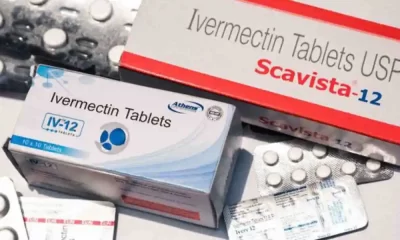
 Health3 years ago
Health3 years agoHow Much Ivermectin Should You Take?
-

 Tech2 years ago
Tech2 years agoTop Forex Brokers of 2023: Reviews and Analysis for Successful Trading
-

 Lifestyles3 years ago
Lifestyles3 years agoAries Soulmate Signs
-

 Movies2 years ago
Movies2 years agoWhat Should I Do If Disney Plus Keeps Logging Me Out of TV?
-

 Health3 years ago
Health3 years agoCan I Buy Ivermectin Without A Prescription in the USA?
-

 Learning3 years ago
Learning3 years agoVirtual Numbers: What Are They For?